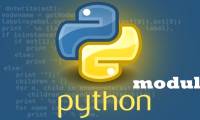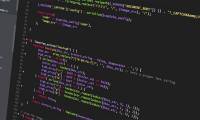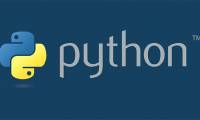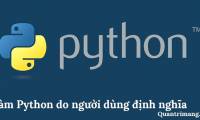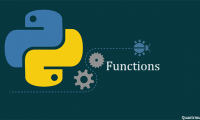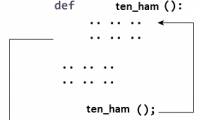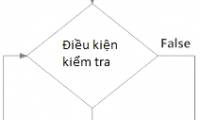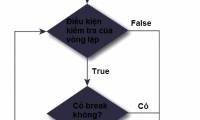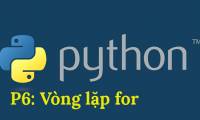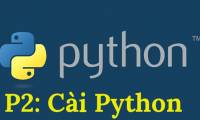
arrays are a fundamental part of all programming languages, it is a collection of elements of a single data type, for example, integer arrays, string arrays. however, in pythong,
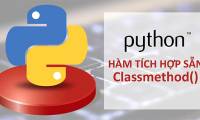
in python, the classmethod () function returns a class method for the function. how is the syntax of classmethod () function, what parameters does it have and how to use it?
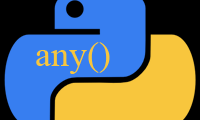
in python, any () function returns true if any element of an iterable is true. if no true element is present, any () function will return false.
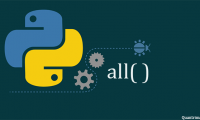
in python, all () returns true when all iterable elements are true or iterable empty and return false in the remaining cases. how does the function all () have syntax, what
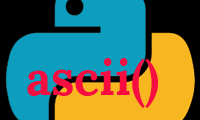
in python, the ascii () function returns a string containing the representation of the object that can print. it ignores non-ascii values in the string using x, u or u.

we will learn how to divide code into efficient, clear modules, using python packages. plus, the way to import and use your own package, or the package you download from somewhere

in this python lesson we will know how to create and import a module in python. we will learn a few ways to import, using custom modules as well as python's built-in modules,

in this python lesson you will learn about global variables, local variables, nonlocal variables in python and the use of these variables.

in the previous article we learned about the built-in python function and the user-defined python function with customizable number of parameters. you will know how to define a

besides the built-in python functions, you can also define python functions yourself, these functions are called user-defined functions (python). what are the benefits of using

in the previous article, you learned that python has a basic function type, one is a built-in function, two are user-defined functions. today, we will learn about a list of

what is python function? how is the syntax, components, and function types in python? how to create functions in python? these questions will be answered in the python lesson

in this python lesson, you'll learn how to control the execution of a loop using loop control statements like break and continue.

in this article we will learn how to use the break command and continue to change the flow of a loop in python.

in this article, we will learn more about for for loop in python as well as its variations, how to use for to repeat a string of elements in python such as list, string or other

the if statement in python is one of the most common and easy-to-learn commands. apart from if there is if else, if elif else. let's explore the details and see examples of these

in this article we will learn a simple python program to get a little more insight into python, before starting to learn about the main components of this programming language.

in this section, you'll learn how to use python as a computer, grasp python's data types and take the first step towards python programming.

to get started with python, you first need to install python on the computer you are using, be it windows, macos or linux. below is a guide to installing python on your computer,
 arrays are a fundamental part of all programming languages, it is a collection of elements of a single data type, for example, integer arrays, string arrays. however, in pythong,
arrays are a fundamental part of all programming languages, it is a collection of elements of a single data type, for example, integer arrays, string arrays. however, in pythong, in python, the classmethod () function returns a class method for the function. how is the syntax of classmethod () function, what parameters does it have and how to use it?
in python, the classmethod () function returns a class method for the function. how is the syntax of classmethod () function, what parameters does it have and how to use it? in python, any () function returns true if any element of an iterable is true. if no true element is present, any () function will return false.
in python, any () function returns true if any element of an iterable is true. if no true element is present, any () function will return false. in python, all () returns true when all iterable elements are true or iterable empty and return false in the remaining cases. how does the function all () have syntax, what
in python, all () returns true when all iterable elements are true or iterable empty and return false in the remaining cases. how does the function all () have syntax, what in python, the ascii () function returns a string containing the representation of the object that can print. it ignores non-ascii values in the string using x, u or u.
in python, the ascii () function returns a string containing the representation of the object that can print. it ignores non-ascii values in the string using x, u or u. we will learn how to divide code into efficient, clear modules, using python packages. plus, the way to import and use your own package, or the package you download from somewhere
we will learn how to divide code into efficient, clear modules, using python packages. plus, the way to import and use your own package, or the package you download from somewhere in this python lesson we will know how to create and import a module in python. we will learn a few ways to import, using custom modules as well as python's built-in modules,
in this python lesson we will know how to create and import a module in python. we will learn a few ways to import, using custom modules as well as python's built-in modules, in this python lesson you will learn about global variables, local variables, nonlocal variables in python and the use of these variables.
in this python lesson you will learn about global variables, local variables, nonlocal variables in python and the use of these variables. in the previous article we learned about the built-in python function and the user-defined python function with customizable number of parameters. you will know how to define a
in the previous article we learned about the built-in python function and the user-defined python function with customizable number of parameters. you will know how to define a besides the built-in python functions, you can also define python functions yourself, these functions are called user-defined functions (python). what are the benefits of using
besides the built-in python functions, you can also define python functions yourself, these functions are called user-defined functions (python). what are the benefits of using in the previous article, you learned that python has a basic function type, one is a built-in function, two are user-defined functions. today, we will learn about a list of
in the previous article, you learned that python has a basic function type, one is a built-in function, two are user-defined functions. today, we will learn about a list of what is python function? how is the syntax, components, and function types in python? how to create functions in python? these questions will be answered in the python lesson
what is python function? how is the syntax, components, and function types in python? how to create functions in python? these questions will be answered in the python lesson in this python lesson, you'll learn how to control the execution of a loop using loop control statements like break and continue.
in this python lesson, you'll learn how to control the execution of a loop using loop control statements like break and continue. in this article we will learn how to use the break command and continue to change the flow of a loop in python.
in this article we will learn how to use the break command and continue to change the flow of a loop in python. in this article, we will learn more about for for loop in python as well as its variations, how to use for to repeat a string of elements in python such as list, string or other
in this article, we will learn more about for for loop in python as well as its variations, how to use for to repeat a string of elements in python such as list, string or other the if statement in python is one of the most common and easy-to-learn commands. apart from if there is if else, if elif else. let's explore the details and see examples of these
the if statement in python is one of the most common and easy-to-learn commands. apart from if there is if else, if elif else. let's explore the details and see examples of these in this article we will learn a simple python program to get a little more insight into python, before starting to learn about the main components of this programming language.
in this article we will learn a simple python program to get a little more insight into python, before starting to learn about the main components of this programming language. in this section, you'll learn how to use python as a computer, grasp python's data types and take the first step towards python programming.
in this section, you'll learn how to use python as a computer, grasp python's data types and take the first step towards python programming. to get started with python, you first need to install python on the computer you are using, be it windows, macos or linux. below is a guide to installing python on your computer,
to get started with python, you first need to install python on the computer you are using, be it windows, macos or linux. below is a guide to installing python on your computer,
